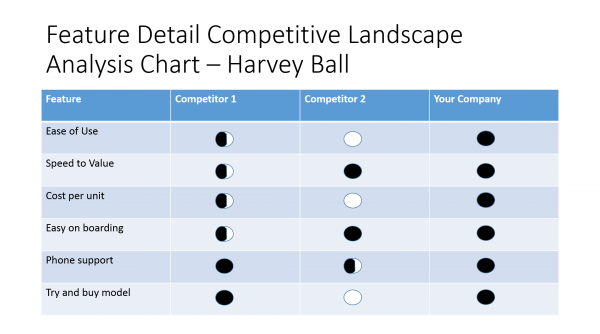News & Insights
Blumberg Capital portfolio news, startup growth resources and industry insights
Venture capital funding is a critical step for many founders looking to scale their startups. When asked “How do you decide to fund one company and not another?” Our team points to the Six Ts: theme, team, terrain, technology, traction and terms. In our Startup Growth Toolkit series, we explore the six Ts that founders should consider when growing their startup.
Once you have introduced your founding team and explained why you are the best team to solve the identified problem, the next step is to position your startup by mapping out the terrain, or the market landscape. Show us how and why your startup is poised to break through the noise and succeed by leveraging market trends, competitive analysis, industry statistics and business projections.
This part of the pitch should highlight your strategic thinking to investors — how you will leverage market opportunities, use competitive advantages and defeat threats. In the pitch, be sure to address the following questions to best position your company’s growth potential in the market.
How does your startup compare with competitors?
Don’t shy away from highlighting the competition that exists in your market. Good ideas don’t exist in a vacuum and competition is not a negative indication for a startup’s growth prospects.
Competition is what fuels innovation and forward momentum. In addition, competition can show that the market has latent demand and opportunities for growth.
Take today’s artificial intelligence (AI) market landscape as an example. AI is not only a differentiator, it’s becoming table stakes for young startups. Lean into how your startup is approaching AI and the intrinsic value it will provide customers, employees and stakeholders. A great example of this is Theator, a surgical intelligence platform that combines artificial intelligence and computer vision to improve surgeon performance. Theator set itself apart in the crowded health tech terrain by leaning into how AI will specifically help surgeons and provide insights that improve both their individual performance and the surgical field.
Show investors a graphic comparison of the competitive field to explain how you will leverage your strengths and overcome your weaknesses relative to the other companies. The best way to show the multi-dimensionality of the competitive landscape is through the use of market positioning charts and infographics. A couple of examples include:
- Harvey Ball chart: This is for an established market where product features can be readily compared:

- Brand positioning graph: This chart is more subjective and provides guidance on the relative strengths and weaknesses of each competitor:

The more up to date, comprehensive and quantitative the market analysis is, the better.
And remember: the most important audience for the competitive analysis is your own team – the deeper your understanding of the market via market positioning analysis, the better you’ll be able to deploy resources efficiently to win market share.
What is your startup business model, positioning and pricing?
This is a great opportunity to illustrate and explain the various competitive pricing strategies in the market and how you will differentiate and succeed. Will your business model be SaaS, transaction-based or other? Will you position your products or services as value-based or premium?
Explain where your product or solution fits in the market and why you are delivering and pricing in this manner. Frequently, the business model and proper selection of target segments is more important than the pricing itself.
How big is the total addressable market? Are you early or late to the market?
If you’re early to the market, tell us about your market education approach. Do you have early adopter customers or design partners who are willing to work with you and then vouch for your product or service? How long will the market education process take and what will it cost? Most importantly, how big is the total addressable market (TAM)? At Blumberg Capital, we invest in companies serving a large addressable market.
If you’re late to the market, tell us how you plan to contend with entrenched competitors. How and why will your strategy be effective to displace them? It’s essential to be realistic here – you need to be able to do what you say you can do. Investors are generally pleased if actual results reflect budget forecasts, so be realistic and be ready to explain the variances.
Example: Blumberg Capital first invested in Yotpo, the leading eCommerce retention marketing platform, in 2014. E-commerce was not a new market in 2014, but the ecosystem supporting the market was ripe for disruption. In 2014, Yotpo was leveraging its technology to generate content and verified reviews from shoppers and share them across search engines and social networks. e-Commerce companies could then see precisely which sales came through emails, Facebook, Twitter and other channels, helping marketing teams better inform strategies and connect with customers.
This approach paid off. Yotpo is a unicorn whose product line integrates with well-known e-commerce platforms such as Shopify, Salesforce Commerce Cloud, Adobe-owned Magento and BigCommerce. The company works with brand names like Patagonia and Steve Madden as well as direct-to-consumer businesses like Princess Polly and has tens of thousands of paying customers.
How long are the sales cycles in your industry and what are your sales projections?
When presenting your company to venture capitalists to show how you stand out amongst competition, first, show the typical sales process or funnel and quantify the ramp-up of sales people or marketing channels based on your business model and budget. Create a bottom-up analysis of lead generation and potential sales to determine a future annual revenue figure. Evaluate the number of likely sales for your product or service, the average price point of sales and timing of the sales ramp.
While you can show scalability through your TAAM (total addressable available market), a bottom up analysis is generally more realistic and, therefore, more productive in a pitch, for budgeting and use thereafter managing the business.
Are you planning to sell direct or through distribution channels?
Finally, detail your go-to-market sales strategy and whether you plan to sell direct or take a channel approach. There are positives and negatives to both and the best path will be different for each business. In many cases, a hybrid model works best.
For example, Check Point Software began as a small team of engineers based in Israel without sales or marketing staff. For them, a channel distribution approach was imperative. The company began working with value-added resellers and OEM partners and was consequently able to launch much faster to market leveraging these experienced, regional and global partnerships. Initially, all direct sales leads were funneled through those organizations.
The Importance of Transparency with Competitive Positioning & Market Analysis
We explained the need to be honest and transparent when introducing the team and the same is true about the market landscape. The best standard is the truth, the whole truth and nothing but the truth. A comprehensive, honest and self-aware competitive review is one of the clearest indicators of your character and if the team has what it takes to succeed.
Show us how and why your solution is superior in certain respects but also tell us about your weaknesses. What would your competitors say about you? What would a dissatisfied customer say? If your product is too slow, for example, be forthright about it so we can collaborate on ways to improve. If you think there is something to hide, you may be able to hide it from investors but if you hide it from yourselves, you are setting the team up for trouble.
This post is the latest in our Startup Growth Toolkit series that explores what founders need to successfully pitch their business to investors to secure venture capital and grow their startup. Stay tuned for the next part in our series, Technology.
For more on the role terrain plays in venture capital fundraising and startup growth, check out:
- TechCrunch, TC Startup Battlefield master class with Blumberg Capital: Make the most of your investors’ expertise
Related Articles




